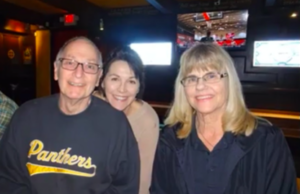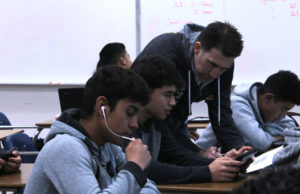English 11 teachers deal with the disappearance of “Salinger”

As a followup to reading the famous novel “Catcher in the Rye,” in English classes, juniors are shown the documentary “Salinger” about the author J.D. Salinger. The movie details Salinger’s life and legacy on the literary world, and is considered by Vanessa Denchfield, English teacher, to give students a deeper understanding about the book and the author.
“You have to know who Salinger is and his life experiences to understand the book because he pours himself so much into Holden Caulfield,” Denchfield said. “It’s his whole psyche manifested in the book.”
In comparison, IB English teachers also show the film, but for the purpose of developing film analysis skills instead.
“Some teachers use it for film literacy and film analysis because we do watch a lot of film documentaries in (the) 11 IB school year, so it is a good way as a start to how to dissect the film and get information out of it,” Robin Lilly, English teacher, said.
The English teachers typically would use Netflix as their main platform for their students to view the movie. However, when the teachers went to plan their schedule for the “Catcher in the Rye” unit earlier this year, they discovered that the documentary was no longer available on the website. After noticing this, Denchfield emailed all the 11th grade English teachers to alert them about this upcoming problem. However, after that the teachers did not meet together to discuss the issue and instead dealt with it separately.
“We haven’t had a chance to meet about the schedule, because we have been so busy,” Lilly said. “But we do meet together to talk and plan for just about every unit.”
Denchfield and Jennifer Halpert, English teacher, took matters into their own hands and emailed Netflix about the missing documentary. In response, they learned that not only was the movie unavailable on the website, but also in a DVD copy. The 11th grade English teachers collectively searched the Internet and local sources, but discovered that “Salinger” could not be found.
“It was spooky; it was almost reflective of Salinger’s character and how he was a recluse,” Denchfield said.
Denchfield had already played half the movie before it was taken off of Netflix, which she claims to be “better than nothing”. To fill the gap in the schedule and in student’s understanding, she decided to show the film “Saving Private Ryan,” as it displays a soldier’s experience in World War II, similar to Salinger’s.
However, Halpert was able to receive a copy from 11 IB English teacher Alana Bond and continued to show the original film.
“‘Salinger’ is essential to understanding ‘Catcher in the Rye’ and I don’t know how the students would be able to grasp the book in the same depth without it,” Halpert said.
In comparison, Lilly asserts that the removal of “Salinger” was a minor issue for the IB curriculum, and not necessary to the student’s learning. This year, she has shown “The Crucible” instead for developing film understanding.
“I did use the Salinger documentary last year and I do understand it has some value,” Lilly said. “But when it wasn’t available, I thought I can use other texts.”
In the future, Denchfield says that the teachers may look for a different movie to replace the “Salinger” showing completely. She will see how the students absorb and apply the information from “Saving Private Ryan,” and decide how next year’s unit will go after that.
“Sometimes restrictions or limitations pushes people to be more creative,” Denchfield said. “When stuff like this happens it pushes you to think what can I do instead, and maybe you will come up with an even better idea.”



